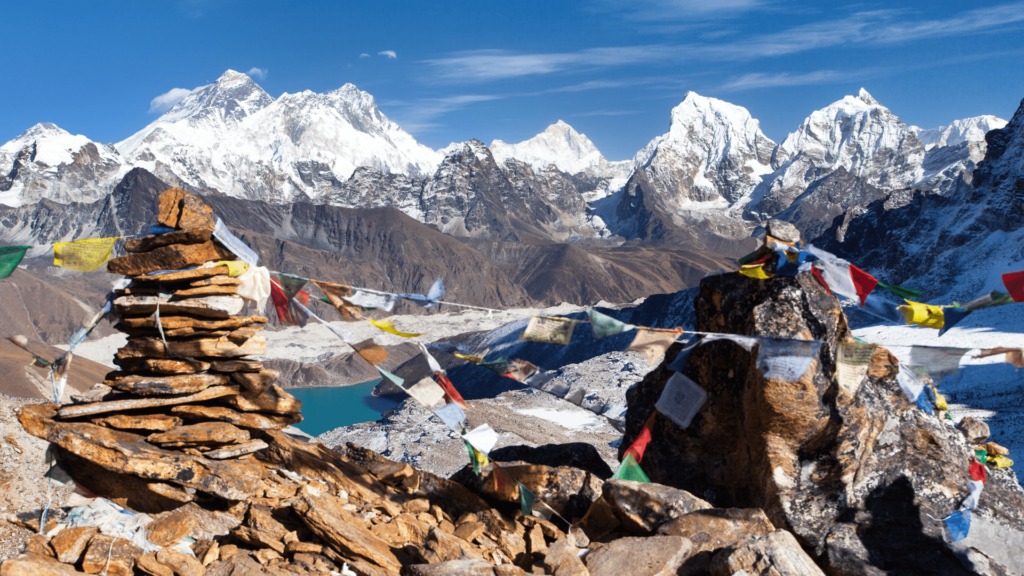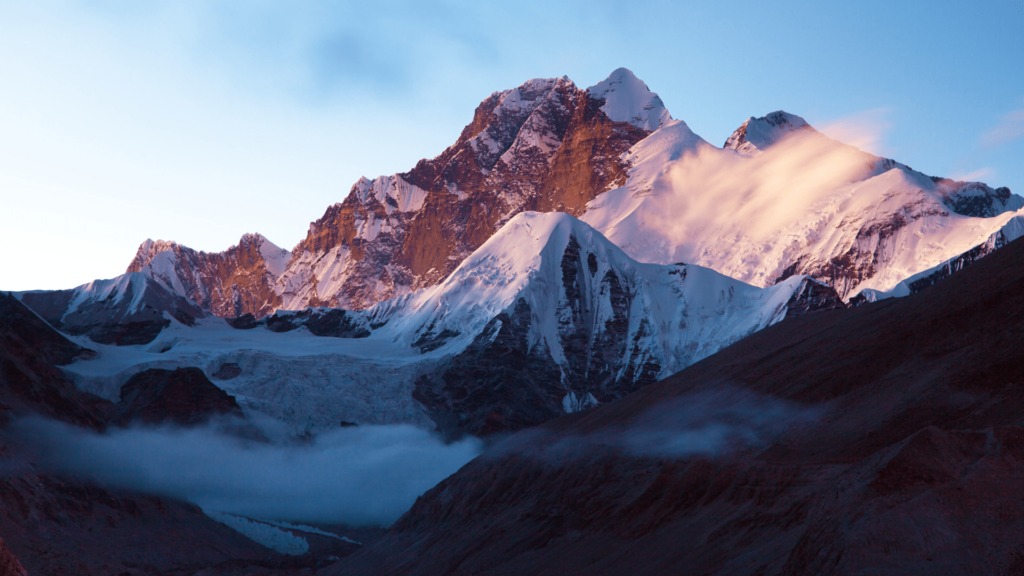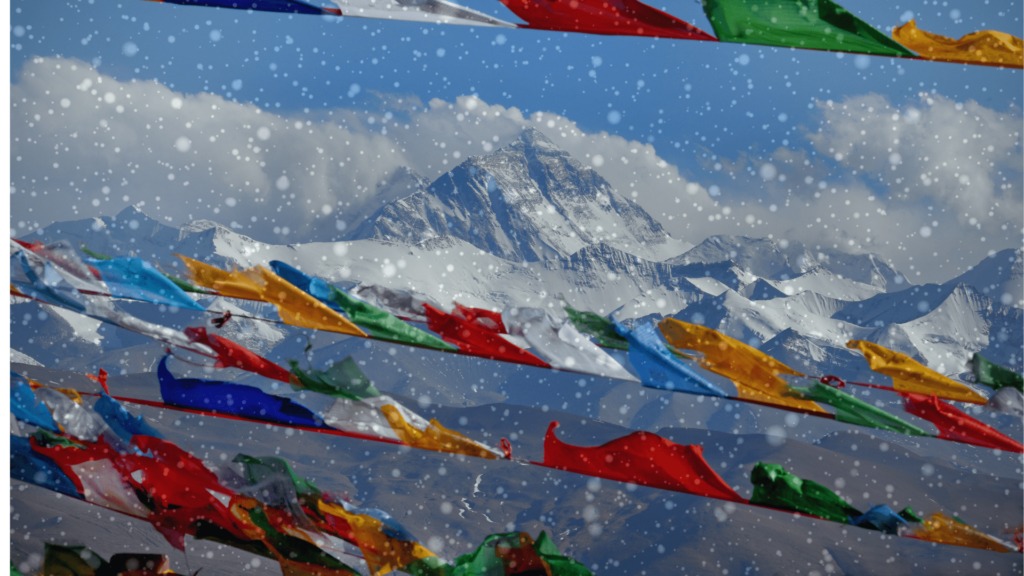The Everest Base Camp Trek is a dream for every adventurer seeking to challenge themselves in the vast wilderness of the Himalayas. Nestled at the foot of the world’s highest peak, Mt. Everest, this trek offers a once-in-a-lifetime opportunity to witness breathtaking landscapes, immerse in Sherpa culture, and stand in awe at the iconic base camp. Yet, while the trek itself is awe-inspiring, its success largely depends on one crucial decision: choosing the best season for the Everest Base Camp trek.
Best Season for Everest Base Camp
Weather plays a significant role in shaping your overall trekking experience. Harsh conditions can dampen your spirits, while clear skies and moderate temperatures can turn a difficult journey into a joyous adventure. If you’re wondering the best time to embark on this epic trek, you’ve come to the right place. We’ll break down the seasons, highlighting when to go for ideal conditions and when it might be best to hold off.
Best Season for Everest Base Camp Trek: February to May and September to December
For those seeking to maximize their experience, the periods from February to May and September to December are widely considered the best times to trek to Everest Base Camp. These months offer the most favorable weather, with clear skies, comfortable temperatures, and safer trails. But let’s dive deeper into what each season offers and why these months are so ideal.
Everest Base Camp Trek in Spring (February to May)
Spring is, without a doubt, one of the most popular times to embark on the Everest Base Camp trek. As the snow begins to melt and temperatures rise, the weather stabilizes, making this period ideal for high-altitude trekking in Nepal. The spring months from March to May are particularly inviting, as they offer both moderate temperatures and spectacular natural beauty.

During the spring season, temperatures steadily rise as winter subsides. As one of the best trekking seasons, spring brings relatively mild and comfortable conditions:
- Daytime Temperatures: In lower elevations like Lukla (2,860 meters), daytime temperatures range between 10°C to 15°C (50°F to 59°F). As you climb higher towards Everest Base Camp (5,364 meters), daytime temperatures hover between 0°C to 5°C (32°F to 41°F).
- Nighttime Temperatures: The nights can still be cold, especially at higher altitudes, where temperatures can drop to -10°C (14°F) or lower near the base camp.
The temperature gradually increases through March, April, and May, with May being the warmest month of spring.
During this time, the lush forests along the trekking route come alive with vibrant rhododendron blossoms, creating colorful panoramas that are hard to forget. The dry paths make walking easier, and the stable weather ensures that your views of Everest and its neighboring peaks remain unobstructed. This is also the prime season for climbing expeditions, meaning you’ll witness tents dotted across the base camp as climbers prepare for their ascent of Mt. Everest, Lhotse, and Nuptse.
In addition to the stunning landscapes and stable weather, spring is the best time if you want to avoid extreme cold while still enjoying magnificent mountain views. Expect mild temperatures during the day, although it can still get chilly at night, especially at higher altitudes.
Everest Base Camp Trek in Autumn (September to December)
After the monsoon season ends, autumn brings crisp, clear weather, making it another peak trekking season. From September to November, the skies are crystal clear, providing spectacular views of the Himalayas. Although the temperatures begin to drop as winter approaches, the cooler weather is usually not a problem for well-prepared trekkers with appropriate clothing.

Autumn is an incredibly vibrant time to trek in Nepal. The paths are drier and easier to navigate compared to the monsoon season, and the atmosphere is buzzing with trekkers worldwide. As you traverse the undulating paths toward Everest Base Camp, you’ll be rewarded with breathtaking views of the towering peaks and the surrounding valleys.
Although autumn is cooler than spring, many trekkers prefer it for its consistent weather and reduced rain chances. Be prepared for colder mornings and evenings, but the daytime temperatures remain comfortable for trekking.
Autumn is another prime trekking season. During this period, the temperatures start to drop gradually after the monsoon, but they remain pleasant for trekking:
- Daytime Temperatures: In lower regions, daytime temperatures in September can be around 15°C to 20°C (59°F to 68°F). As you reach higher altitudes, temperatures range from 0°C to 10°C (32°F to 50°F).
- Nighttime Temperatures: In November, nights become colder, especially at base camp, where nighttime temperatures can fall to -10°C (14°F) or even lower.
In September, the weather is still relatively warm compared to late autumn in November, when the cold begins to set in.
What makes autumn especially appealing is the opportunity to witness or even participate in Nepal’s most important cultural festivals, like Dashain and Tihar, which often fall within this season. This adds a special cultural dimension to your trekking experience, as you can immerse yourself in the local traditions and festivities.
Off-Seasons: Winter and Monsoon
While trekking during the off-seasons offers its own unique experience, it’s crucial to be prepared for more extreme weather conditions. The off-seasons include the winter months from December to January and the monsoon season from June to August.
Everest Base Camp Trek in Winter (December to January)
For those who love solitude and don’t mind braving the cold, winter trekking can be an unforgettable experience. From December to January, the Everest region transforms into a snow-covered wonderland, and the trekking trails are almost deserted compared to the peak seasons.

The downside? Winter is the coldest period of the year, with temperatures plummeting to well below freezing, especially at night and at higher altitudes. The thick snow can make the paths difficult to navigate, and some routes may even be blocked. Despite these challenges, if you’re properly equipped with cold-weather gear and willing to face freezing conditions, you’ll be rewarded with unmatched peace, quiet, and spectacular winter landscapes.
Winter is the coldest time to trek to Everest Base Camp. The temperatures plummet, and the difference between day and night is stark:
- Daytime Temperatures: At lower altitudes, daytime temperatures range from 5°C to 10°C (41°F to 50°F). However, at higher elevations near the base camp, the temperature during the day can drop to -5°C to -10°C (23°F to 14°F).
- Nighttime Temperatures: At night, especially at altitudes above 4,000 meters, temperatures can drop sharply to -15°C to -20°C (-4°F to -5°F), and occasionally even lower.
While the sunshine can provide some warmth during the day, trekking in the shadowed parts of the trail or in high winds can feel much colder.
The advantage of trekking in winter is the clear skies, which offer unparalleled views of the snow-capped mountains. With fewer trekkers on the trails, you’ll have a more intimate and serene experience at the Everest Base Camp. Just be sure to plan for the colder temperatures and shorter days.
Everest Base Camp Trek in Monsoon (June to August)
Monsoon season is the most challenging time for the Everest Base Camp trek, and it’s generally not recommended unless you are specifically looking for a different kind of adventure. From June to August, heavy rainfall transforms the trekking routes into wet, slippery paths, increasing the risk of accidents.
Additionally, the clouds often obscure the majestic views of the mountains, and the forests along the trail become breeding grounds for leeches, making the trek less enjoyable. The combination of muddy trails, high humidity, and limited visibility can turn a scenic trek into a rather gruelling experience.
That said, the monsoon period has its appeal. The lower trekking routes are lush and green, and you’ll encounter fewer trekkers, meaning more seclusion and tranquillity. Some adventure-seekers who love challenges opt to trek during the monsoon for a more unique experience. Just keep in mind that this season requires extra caution and planning.
During the monsoon, temperatures remain relatively warm, but the high humidity and rain make trekking less comfortable. The combination of warm weather and precipitation can make trails slippery and muddy.
- Daytime Temperatures: In lower regions, daytime temperatures can reach up to 20°C to 25°C (68°F to 77°F). Higher up, near Everest Base Camp, daytime temperatures range between 5°C to 10°C (41°F to 50°F).
- Nighttime Temperatures: Nights are cooler, especially at higher altitudes, with temperatures around 0°C to -5°C (32°F to 23°F).
Temperature Variation with Altitude
The general rule of thumb is that for every 1,000 meters (3,281 feet) you ascend, the temperature drops by about 6°C (11°F). This explains why the temperatures vary so widely between lower trekking regions like Lukla and higher altitudes like Everest Base Camp.
At Everest Base Camp itself (5,364 meters), the temperatures can vary from -15°C to 10°C (5°F to 50°F) depending on the time of year, with nighttime always being much colder.
In summary, the temperature increases during the day, particularly when the sun is out, but drops significantly at night and higher elevations. The spring and autumn seasons provide the most comfortable conditions for trekking, while winter brings extreme cold, and monsoon treks are marked by warmer but wetter conditions.
How to Choose the Best Season for Your Everest Base Camp Trek
Now that you know the ins and outs of each season, how do you decide which is the best for you? The answer depends on your personal preferences and how comfortable you are with the weather extremes.
If you value clear skies, mild temperatures, and colourful landscapes, spring is your best bet. For those who love trekking with fewer crowds, enjoy cold weather, and seek stunning mountain views, autumn is ideal. If solitude, peace, and a unique trekking experience are what you seek, winter might be the right time for you. And for those daring enough to face muddy trails and unpredictable weather, monsoon trekking offers an adventure like no other.
No matter which season you choose, the Everest Base Camp trek is bound to be a thrilling and rewarding experience. Just make sure to plan, pack the appropriate gear, and prepare for the challenges that each season presents.
FAQs
Is spring or autumn better for the Everest Base Camp trek?
Both spring and autumn are ideal times for the Everest Base Camp trek, but the better season depends on your preferences. Spring (March to May) offers warmer temperatures and colourful rhododendron blossoms, making the trek scenic and enjoyable. During this time, the weather is relatively stable, and you can expect clear mornings and afternoons. The snow begins to melt, and you’ll also witness climbers preparing for their Everest expeditions.
Autumn (September to November) is favoured for its crisp, clear skies and incredible visibility. After the monsoon season, the air is fresh, and the skies remain consistently clear, allowing for stunning panoramic views of the mountains. The temperature is cooler than in spring, especially at night, but it’s still comfortable during the day. Autumn treks are also less humid than spring, reducing the chances of cloud cover during your trek. Many trekkers prefer autumn for its beautiful weather and cultural festivals like Dashain and Tihar, which add a cultural dimension to the journey.
In conclusion, if you prioritize warmer weather and vibrant flora, spring is the better choice. If you prefer cooler weather, clear skies, and spectacular mountain views, autumn is ideal.
Can beginners trek Everest Base Camp in winter?
Yes, beginners can trek to Everest Base Camp in winter, but it comes with significant challenges. Winter (December to January) is the coldest time of the year, and temperatures at higher altitudes can drop to extreme levels, sometimes below -20°C (-4°F) at night. While the skies are often clear, snow can make the trails difficult to navigate, and some routes may be closed due to heavy snowfall.
Winter trekking demands excellent physical preparation and the right gear. You’ll need insulated clothing, proper boots, and high-altitude trekking equipment. Trekkers must also be prepared for shorter daylight hours, meaning longer hikes in the cold and potential difficulty finding open teahouses, as many close during the off-season.
For beginners, winter trekking is not impossible, but it’s more challenging than trekking in the peak seasons. It requires physical fitness, mental endurance, and cold-weather gear. Hiring an experienced guide is also highly recommended to ensure your safety and navigation during this period.
How rainy is the monsoon season at Everest Base Camp?
The monsoon season (June to August) brings heavy rains, especially in the lower regions of the Everest Base Camp trek. Rainfall can be frequent and intense, with paths becoming muddy, slippery, and sometimes difficult to navigate. In higher altitudes, such as Everest Base Camp itself, the rainfall is less frequent, but you’ll still encounter cloudy and misty conditions, which often obscure the iconic views of the mountains.
In the lower regions like Lukla or Phakding, trekkers should be prepared for wet and humid conditions, with an increased presence of leeches in the forests. The heavy rains not only make the trek challenging but also increase the risk of landslides in certain areas.
While monsoon trekking is not recommended for those seeking clear mountain views, some adventure seekers enjoy the quiet trails and lush, green landscapes that follow the rains. Trekkers should be prepared for wet gear, reduced visibility, and slippery paths during this season.
How do seasonal festivals impact trek dates?
Seasonal festivals like Dashain and Tihar, which take place in autumn, can greatly enhance the trekking experience. These major Nepali festivals bring a vibrant cultural atmosphere to the region. Dashain is celebrated around September to October, while Tihar is in late October to November.
During these festivals, you’ll see villages along the trekking route decorated with lights, flowers, and colourful rituals. While trekking, you can immerse yourself in local traditions, visit monasteries, and witness religious ceremonies. Many trekkers plan their Everest Base Camp trips to coincide with these festivals, as they offer a unique opportunity to experience the Sherpa culture and the Nepali way of life.
However, the festivals also lead to increased traffic on the trails and in teahouses, as locals and tourists alike travel during these times. Booking accommodation in advance is advisable to avoid the rush.
Which month offers the best views of Mount Everest?
The months offering the best views of Mount Everest are typically October and November during the autumn season. After the monsoon rains have cleared the dust and pollution from the atmosphere, the skies remain crisp and clear. This allows for uninterrupted panoramic views of the entire Himalayan range, including Mount Everest.
Another excellent time for stunning views is late April to May in the spring season when the weather is warmer and the skies are generally clear. In both seasons, the combination of cool air and high visibility provides optimal conditions for enjoying the majestic scenery.
For those specifically interested in photography or uninterrupted views, trekking in late autumn or late spring provides the clearest vistas.
How does snow impact trekking in the winter months?
Snow in the winter months significantly impacts the Everest Base Camp trek, primarily making the trails more difficult to navigate. Heavy snowfall can block paths, especially at higher altitudes like Gorak Shep and the base camp itself. Trekkers may need to divert from the usual routes or rely on experienced guides to ensure safe passage through snow-covered areas.
The snow-covered landscape, while beautiful, presents additional challenges, such as frozen streams, icy patches, and snowdrifts, which can make walking slippery and hazardous. Trekkers need proper winter gear, including crampons for traction, insulated boots, and warm clothing to withstand the frigid temperatures.
However, the snow also creates a magical winter wonderland, with stunning white landscapes and fewer crowds. The clear skies during winter, combined with the pristine snow, offer spectacular views of the mountains, making it an appealing choice for trekkers who are well-prepared for the cold.
Conclusion
Choosing the best season for the Everest Base Camp trek is crucial to ensuring a successful and memorable journey. Whether you prefer the lush blossoms of spring, the clear skies of autumn, the quiet solitude of winter, or even the challenge of trekking through monsoon rains, each season brings its own unique experience. Proper preparation, planning, and understanding of the conditions will help you make the most of this extraordinary adventure.